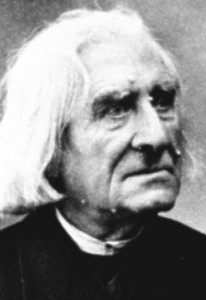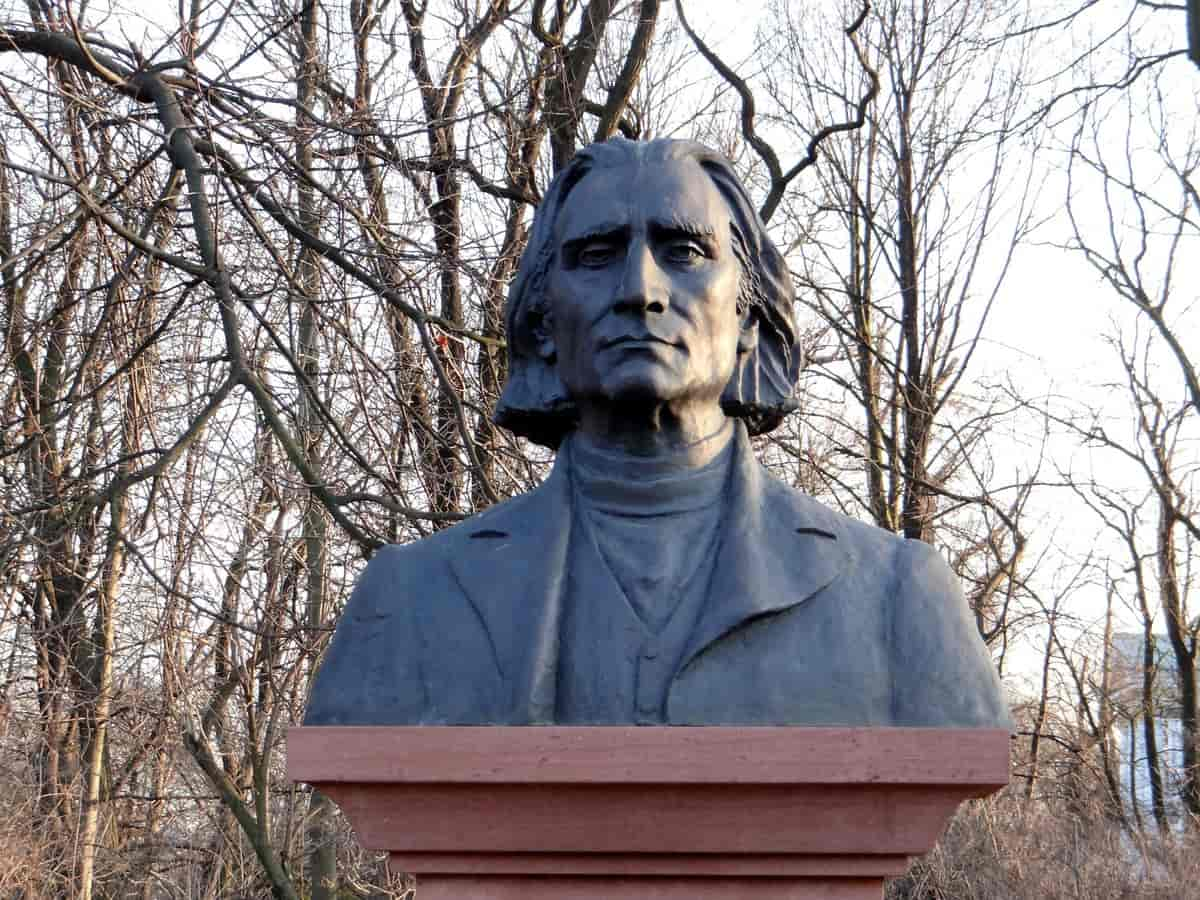

Many people did not have the opportunity to hear concerts very often, and they certainly did not have radios or CDs, so Liszt was making these works more famous, helping them to reach a wider audience. He took symphonies by Beethoven or songs by Schubert and changed them so that they could be played on the piano. It seems a strange idea to us now to take someone else’s symphony and arrange it for piano. Not all Liszt’s piano pieces were original compositions: he also made arrangements or transcriptions. They are like the Impressionistic music of Debussy. Some of his last piano works are much simpler to play, although the chords would have sounded very modern for his time. Sometimes he made it sound like an orchestra. Liszt explored all the possible sounds that the piano could make (it was still a fairly new instrument). In Switzerland he wrote Années de pèlerinage (Years of Wandering), a collection of pieces to which he gave titles later. One collection is called Transcendental Studies. He wrote studies which are much more than just pieces to improve one’s piano technique. He often took a theme and transforms it (changes it gradually).
#BIO OF FRANZ LIZST FREE#
Mostly his piano works are shorter pieces which are quite free in form. It is a very Romantic work, but it does not tell a story like a lot of Romantic pieces do.

Its form is very different from the sonatas of composers like Beethoven. Most of Liszt’s compositions were for piano. Compositionsĭie Hunnenschlacht, as painted by Wilhelm von Kaulbach, which in turn inspired one of Liszt's symphonic poems. He is known for his dazzling virtuostic piano displays best. Needless to say he was one of the most important romantic composers of his day. He could be very generous, giving both money and time to other musicians and giving praise where it was deserved.
#BIO OF FRANZ LIZST HOW TO#
He could be very polite and knew how to get on with the aristocracy. A lot of people drew caricatures of him playing the piano with his wild mop of hair. When he played the piano at concerts he was a great showman. Liszt had a very strong personality which affected everyone he met. He called this his “vie trifurquée” (three-forked life). Liszt spent most of his last years travelling to and fro between three cities: Rome, Weimar and Budapest. Liszt and Wagner quarrelled for many years about this. His daughter Cosima, who had married a famous conductor Hans von Bülow, left her husband and lived with Wagner. He wrote a lot of religious music and took orders in the Catholic church. He still saw her and the children every summer for a few years but finally they separated completely.

When Liszt gave away a lot of his money to help pay for a monument to Beethoven in Bonn he had to earn money by going on tours again, so the countess left him. They lived together for several years and had three children. The Countess left her husband and went to live with Liszt in Geneva.

Soon Liszt met a Countess called Marie d’Agoult. Both men wrote music which was incredibly hard for their instruments. Both men were drawn by cartoonists as devilish characters. Liszt was to do for the piano what Paganini had done for the violin. In 1831 he met the violinist Niccolò Paganini and he was amazed by his virtuoso playing. He met Berlioz and he liked the music of Berlioz very much. He read a lot of books to try to educate himself properly. It was the first of many love affairs he had with various women. After his father died he became a piano teacher in Paris. Liszt continued to travel to other countries. On his second visit there in 1825 he played to King George IV at Windsor. Soon he was asked to play the piano everywhere in Paris. So he studied music theory privately with Reicha and composition with Paer. He wanted to go to the Conservatoire to study music but Luigi Cherubini would not let him in because he was a foreigner (i.e. In 1823 his family moved again, this time to Paris. Beethoven is supposed to have kissed him on the forehead. He soon became famous although he was still a young boy, and he met famous musicians like Beethoven and Schubert. He had piano lessons from Czerny and composition lessons from Salieri.


 0 kommentar(er)
0 kommentar(er)
